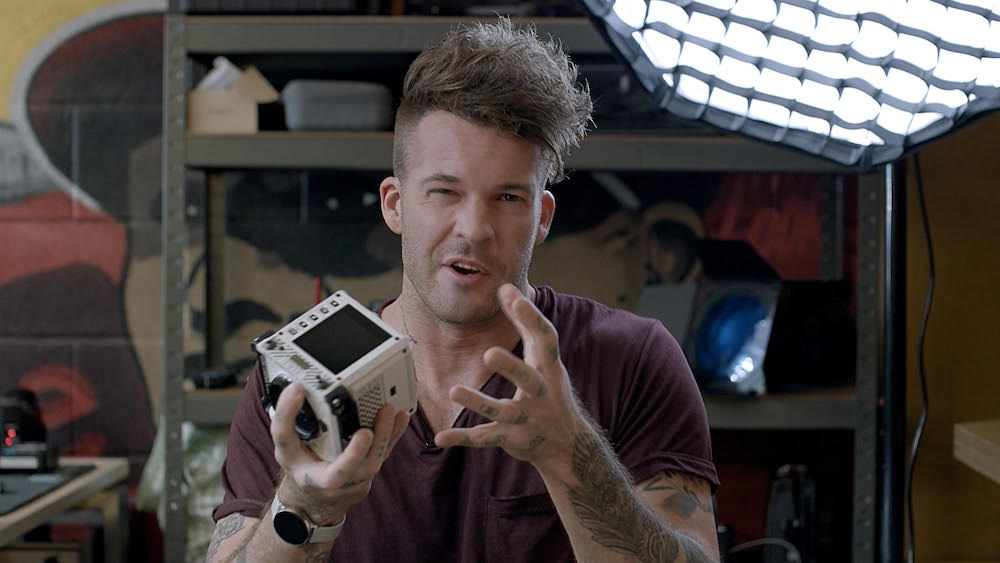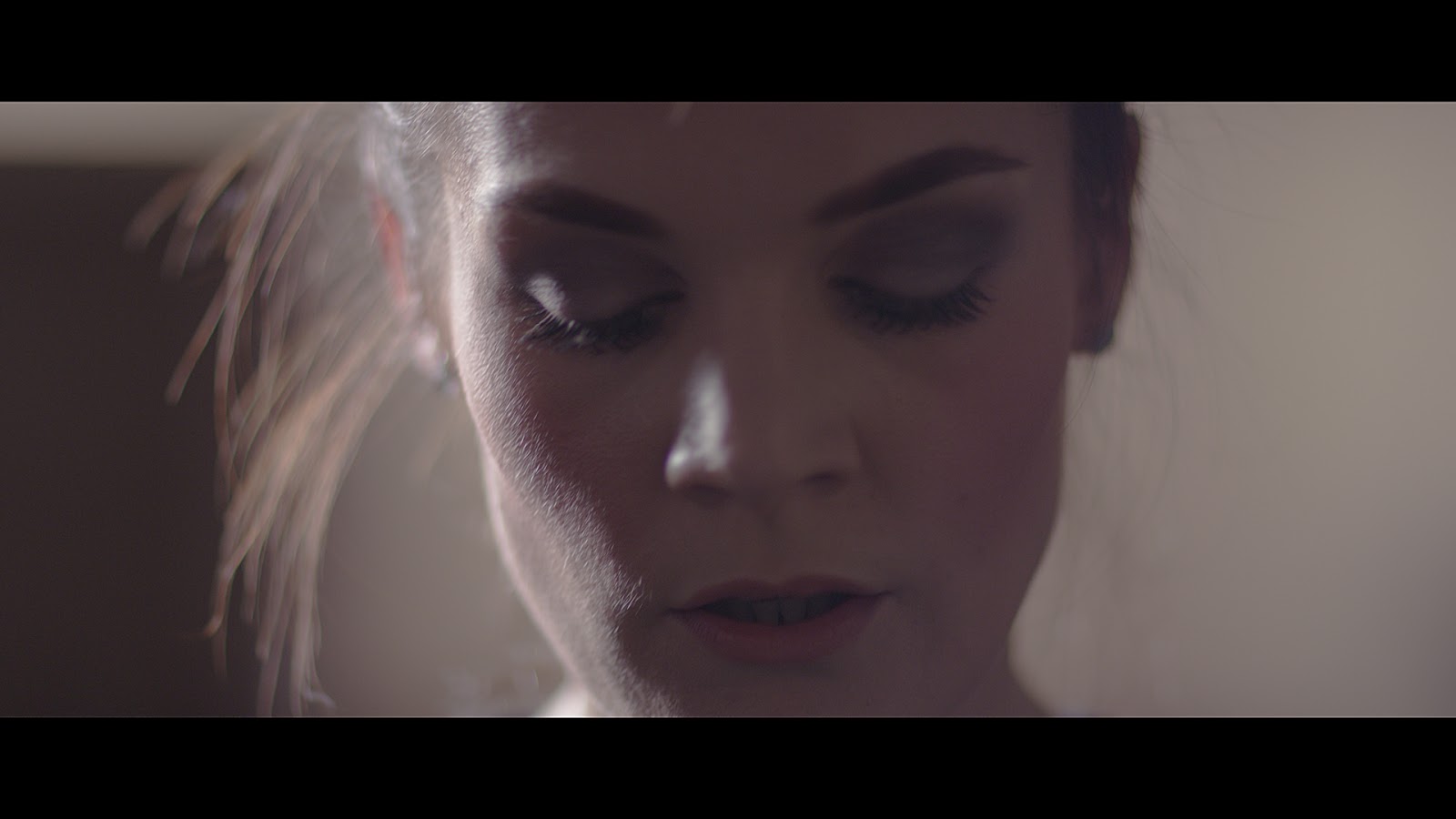
31 Mar How Film Equipment Determines Your Shooting Style
We asked Viddyoze’s Dan Stoner to run us through his bag of tricks for Cinematic Shooting focussing on cameras and lenses and what it means to shoot in a cinematic style.
Dan’s Camera Bag
My shooting style, which I define as being cinematic, is determined by the type of video equipment I use. I know what you’re thinking – cinematic is such an overused word in the world of video. And I get it. I do. But hear me out.
I shoot almost exclusively on cinema cameras with RED being my go-to weapon (inside joke). So, by reason of logic, if I’m shooting on a cinematic camera, the output, my style, is going to be cinematic. I can’t explain it any other way.
A number of key characteristics for a cinematic shooting style
My cinematic shooting style is shaped by a number of key characteristics. These are:
-
- Bokeh
- Aspect Ratio
- Light
- Colour
- Subject*
Allow me to expand on each of these to give you a better understanding of how that actually works.

Depth of field or Bokeh: A combination of glass and sensor
At its most basic form, depth of field (DOF) or bokeh is background blur. The blurrier it is, the merrier I am. Which is why, when it comes to choosing a lens, the number one thing I look for is its ability to render beautiful bokeh.
And that means a fast lens with a low aperture. So, no more than F2, but ideally F1.2–F1.4. This ensures that:
-
- I can shoot with little light – which I discuss further below
- My subject always looks pin-sharp
- The background is ‘thrown out’ (i.e. creating the kind of depth that makes it look less ‘flat’ and, you guessed it, more cinematic)
Here are a couple frame grabs where I’ve shot wide open with the intention of chucking out the background to make what would be a basic image appear more interesting. One thing to note – the wider you shoot, the harder it is to achieve a consistent focus. Mastering manual focus is essential.
I tend to go through lenses like I go through hot dinners. And I’m constantly on auction sites looking at old lenses, reading the latest articles about lenses that are about to drop and watching review videos on YouTube.
Why? Because I’m always interested in seeing what new lenses are out there that will complement and evolve my style.
I’m always interested in seeing what new lenses are out there that will complement and evolve my style.
To give you an idea of how that might look, here are two very different lenses I’ve snapped up based on my cinematic aesthetic: a vintage USSR Helios 44-2 58mm and a brand new Canon RF 28-70mm F2.
These are two very different lenses – for two very different reasons. One is a small lightweight vintage prime lens mass-produced in 1958 as a knock off Zeiss. Two is a monster modern zoom leading the way in optical performance and innovation. Not only are they different in age, performance and focal lengths, they’re also at complete opposite sides of the price spectrum. The Helios cost me about £55 and the Canon £3,200.
Despite the price difference, they’re both equally amazing – and, in my opinion, they actually share a lot in common. The Helios is famous for its unique swirly bokeh and, although it isn’t the sharpest lens in the world, the unusual bokeh draws attention to the centre. This tricks us into seeing a super crisp image.
The Canon, on the other hand, is possibly the sharpest lens I’ve ever used – and all the way through the focal ranges, which is unheard of. I mean F2 from 28mm all the way to 70mm – sheeeeet! But it also has a very unique bokeh that I just can’t put my finger on. For me, these things are the kind of characteristics I look for in lenses. Something unique, a bit like myself.
For me, these things are the kind of characteristics I look for in lenses. Something unique, a bit like myself.

Aspect Ratio: Super 35mm
Another biggie for me. And because I shoot almost exclusively on RED cameras, a super 35mm aspect ratio is pretty much guaranteed (all but one of RED’s cameras have an S35 sensor, aka super 35mm).
This gives it an instant cinematic look. The fact it’s a mirroring film and comes with the aspect ratio to match also contributes to this aesthetic (it’s effectively emulating actual physical film). You might be thinking that in a digital world full of full-frame mirrorless cameras, where it’s easy to add some black bars in post-production, why do I still choose a crop sensor?
Mostly because I can’t afford a RED Monstro, but also because It’s something I’ve grown to love the more I’ve used. I’ve shot on full-frame cameras, hell I even own one of Canons’ full-frame R cameras. Maybe because I’ve had to learn to deal with the crop ratio and how that affects the focal length of my glass thus making me think more about the shots I want. After all, 50mm isn’t 50mm on an S35 when using FF lenses. At least it doesn’t capture the same width. A 50mm is always going to be a 50mm.
Or maybe we’ve just been exposed to the widescreen format for so long with blockbuster films and tv. I’ve had plenty of discussions about ‘filling the screen’ for online content, or ‘can we lose the blackbars’ and this really frustrates me. I shoot with the intention of having these bars, that’s how the camera captures it so that’s how it should be viewed. It’s part of my shooting style… it’s cinematic.
It’s part of my style… it’s cinematic.
Light: Low-key

One of the most important aspects of my style is the lighting. I use mostly natural or very little light. And when I do light a scene it’s very ‘low key’. Low-key lighting is an effect that uses a hard light source to enhance shadows in your scene. It’s all about contrast, placing emphasis on the subject and minimizing any distractions. This helps guide people’s gaze to where you want it to be.
The great thing about this style is that it uses minimal equipment. But it does mean you have to do more to build it up, as you’re essentially going to have to start with a blank canvas – or a dark one anyway – and then try to add light where needed to draw focus to your subject.
And this is why I love it being one of the most defining aspects of my style. It takes work, effort and a whole load of creativity to achieve. I’ve had to literally paint this canvas with light and leave my mark on it. Now, I don’t always get the luxury of doing this. I don’t always get big sets, big budgets and big amounts of time. But I have somehow managed to ‘simplify’ it for the quick turnaround content I sometimes have to make. I’ve ‘borrowed’ my style from my more extravagant shoots and sprinkled it on my more ‘business as usual’ content.
One of the main reasons I shoot low-key footage, other than it looking f***ing cool, is that it feels more human. In the sense that it adds drama, mood and ‘feels’. It also gives me the ability to get viewers to focus on my subject, which is what I’m best at capturing. People.
Anyway, I digress. To sum up, I like dark scenes, low saturation and moody shadows – that’s how I get people to focus their attention on my subject.
One of the main reasons I shoot low-key footage, other than it looking f***ing cool, is that it feels more human. In the sense that it adds drama, mood and ‘feels’. It also gives me the ability to get viewers to focus on my subject, which is what I’m best at capturing. People.
Colour
Colour is another great way for me to leave my mark on my content. Unfortunately, I don’t have the budget to do it in the way Wes Anderson does. And by that I mean props, locations, wardrobe, the lot. I have to rely on post-production to give my footage the ‘cinematic’ style I strive for.
Shooting RED gives me 16bit RAW footage, which is pure eye-gasam inducing stuff for me. That means I’m able to adjust colours on a much more minute level. I tend to lean more towards the blues in the shadows keeping it looking cooler and moodier, and slightly desaturated oranges in the midtones and highlights, which gives it some warmth on skin tones (but not too much that it clashes with my cold moody shadow look). While it isn’t the only colour palette I use, it is my go-to, tried and tested one.
Here are a couple of examples from a recent Documentary I shot for Viddyoze. Before and Afters.
Okay last one…
Subject: humans (some more human than others)
This one doesn’t really define my style in terms of ‘cinematic-ness’ (that’s a new word – you’re welcome) but more my style in terms of what I enjoy shooting (or what I feel I’m good at shooting). Does that make sense?
I’m at my best when I capture people at their best. And this comes down to having the balls to just get all up in people’s grill, as the saying goes. It means being affable, relatable and not being scared to ask questions or to speak openly about yourself on a human level. Basically be vulnerable and more human and it’ll put your subjects at ease.
I feel I bring a level of wit, good humour and schoolboy charm that allows me to get away with a lot more than other people. And it works because it’s who I am – I’m not putting on a show. That authenticity matters. It creates trust. Ease. And, you know, taking the mick out of people is the number one thing I’m good at (other than creating cinematic masterpieces). And guess what? It gets me the shots I want.
Final Thoughts
Take everything I’ve said with a pinch of salt. Let me explain. Having a unique style is great. In fact it’s essential in helping people identify your video from someone else’s when they are watching something you’ve created, and that’s down to it being your style. However, being flexible is important – after all, you’re aesthetic might not work for every brief that comes your way and when it comes to working with clients you have to factor in their own look – as well as follow their brand guidelines.
Similarly, it’s unlikely that you’ll be shooting a particular genre of video content time after time. You’ll be expected to shoot, edit, direct, produce, grade and deliver all sorts of content – just like I do.
For example, at this point in my career, I’m no longer shooting TV commercials. More and more I find myself filming YouTube content, documentaries and short-form videos. And that’s okay because I still carry my style across all of what I do, it’s just delivered in different ways.
And if you can bring over elements of your style to suit the needs of clients better, then more power to you.
I’ll leave you with some examples of my ‘cinematic’ style splashed over some simple images of some personal work.
Dan Stoner (@danthemanstoner) is Senior Cinematographer and Creative Director at Viddyoze, a SaaS web-based 3D animation software that allows absolutely anybody, regardless of technical knowledge, to create stunning professional animations in just a few steps. Video animations made simple.










